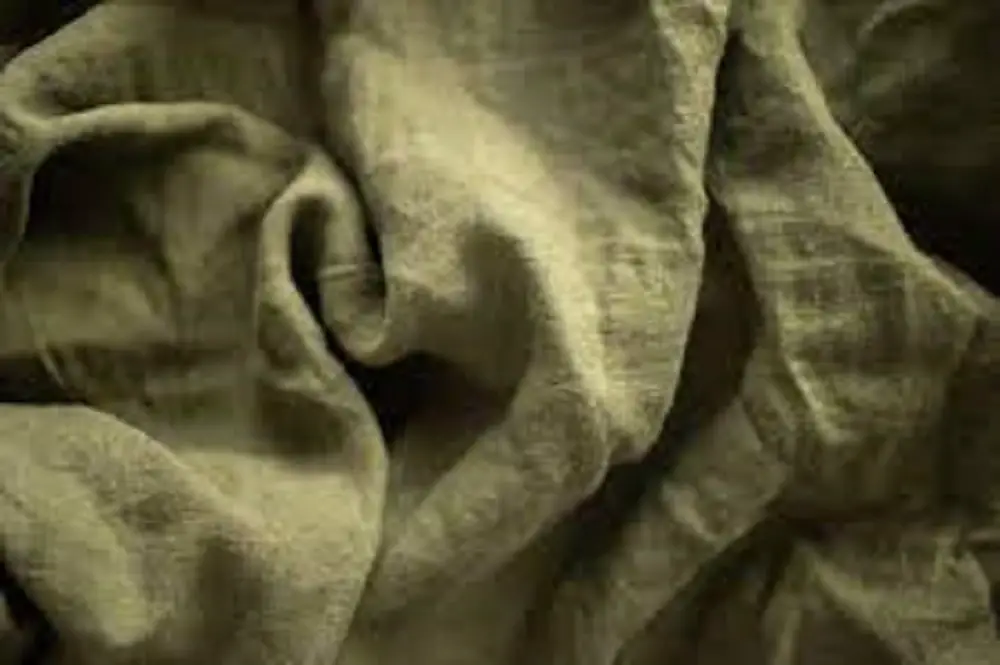Understanding how to iron wrinkles out of linen might seem challenging due to the fabric’s unique properties. But fear not! With this comprehensive guide, you will be equipped with knowledge and techniques to achieve a smooth finish every time.

Photo from Pexels
Why Linen Wrinkles Easily
Linen, derived from the flax plant, is beloved for its breathability and comfortable texture. Yet, its weave and the natural characteristics of the fibers make it susceptible to wrinkling.
This propensity to wrinkle is due to the natural structure of the fiber, which lacks elasticity. While these wrinkles often add character and charm to the fabric, it’s essential to know how to manage them, especially when a polished look is desired.
Preparation Before Ironing
Properly preparing your linen items can make a significant difference in the ironing process. Here’s how:
- Washing: Always wash linen items before ironing. Clean fabric irons more efficiently, and washing can even help relax some of the initial wrinkles.
- Slighty drying: While it’s tempting to dry linen completely, it’s more effective to iron it while it’s slightly damp. The moisture will assist in the wrinkle-removal process. If using a dryer, set it to a lower heat and remove items while still damp.
- Setting up your ironing board: A clean, padded ironing board is essential. Any debris or hard surfaces can imprint on the delicate linen fabric, so ensure the board is free from dirt and in good condition.
How to Iron Wrinkles Out of Linen: Step-by-Step Instructions
Ironing linen requires a careful approach. Follow these steps to achieve the best results:
- Set the iron temperature: Begin by setting your iron to the ‘linen’ or high-temperature option. Always ensure the iron is clean to prevent transferring any residue onto the fabric.
- Start with the inside: To maintain the natural sheen of the fabric and prevent unwanted shine or marks, start by ironing the inside of the garment or item.
- Use steam: Steam is linen’s best friend. If your iron has a steam function, use it generously. Alternatively, keep a spray bottle filled with water nearby and lightly mist the fabric before ironing. The moisture helps soften the fibers, making it easier to remove wrinkles.
- Move quickly: Swift and even movements prevent the iron from resting too long in one spot, which can scorch or damage the fabric. Glide the iron steadily across the linen, applying gentle pressure.
- Check for wrinkles: After ironing, inspect the fabric for any lingering wrinkles. For stubborn creases, consider using a pressing cloth—a thin piece of fabric placed between the iron and the linen—to provide an additional layer of protection.
For more articles like this click here – How to Iron: Easy Guide to Mastering the Art of Ironing
Additional Tips for Pristine Linen
To keep your linen items looking their best, follow these additional care tips:
- Store linen garments or items in a cool, dry place. Proper storage prevents unnecessary wrinkling and protects the fabric from moisture, which can lead to mildew.
- For garments, use padded hangers to maintain their shape. If storing linen for extended periods, consider garment bags to shield them from dust and pests.
- While some opt for starch to give linen a crisp appearance, it can make the fabric stiff. Use sparingly or consider natural alternatives.
Maintaining Linen’s Longevity
While ironing is an essential aspect of linen care, ensuring the overall longevity and quality of the fabric goes beyond just keeping it wrinkle-free. Here are some pointers to help maintain the life and beauty of your linen items:
- Proper Storage: Linen should be stored in a well-ventilated area to prevent any moisture buildup, which can lead to mildew. Avoid storing in plastic bags for prolonged periods as this can restrict airflow.
- Avoiding Prolonged Sunlight: While drying linen in the sun can give it a pleasant fresh scent, extended exposure to direct sunlight can weaken the fibers and fade the color. It’s best to dry linen in the shade if possible.
- Using Gentle Detergents: When washing linen, opt for mild detergents without bleach. Bleach can weaken linen fibers and cause them to break down over time.
- Hand Washing: If possible, consider hand washing delicate linen items. This gentle method ensures the fabric isn’t subjected to the vigorous agitation of a washing machine, thus preserving its integrity.
FAQs on Ironing Linen
For additional clarity, here are some frequently asked questions about ironing linen:
Can I use a garment steamer instead of an iron?
Yes, garment steamers are another excellent option for removing wrinkles from linen. They’re especially useful for items that are cumbersome to iron, like linen curtains or draperies.
Steamers provide a gentle and effective way to smooth out wrinkles without direct contact with the fabric.
How often should I iron linen?
It depends on your preference and the specific use of the linen item. For daily wear garments, you might choose to iron them after each wash.
For home textiles like tablecloths or bed linens, you might iron them as needed or before special occasions.
Can I iron embroidered or embellished linen?
Ironing embroidered or embellished linen requires extra care.
Always iron on the reverse side and use a pressing cloth to protect intricate designs or embellishments. Be gentle and avoid pressing down too hard to maintain the integrity of the embroidery.
Conclusion
Mastering the art of ironing wrinkles out of linen is a valuable skill that ensures your linen items remain crisp and fresh.
With careful preparation, the right technique, and a bit of patience, you can easily transform wrinkled linen into smooth, elegant fabric. Embrace the beauty of linen, and with this guide, wear it with confidence and style.
